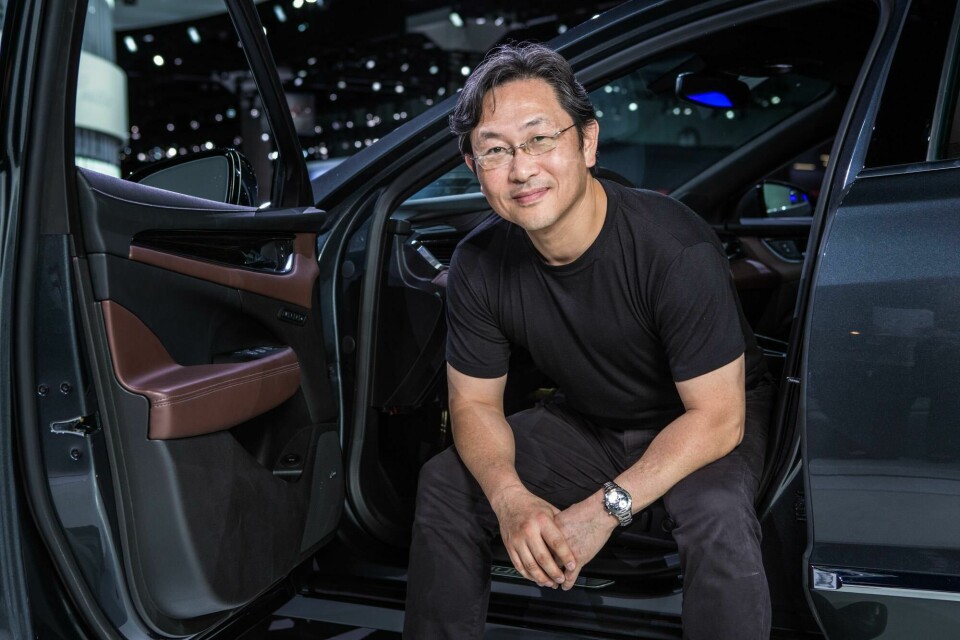
The Designers Pt 14: Richard Chung, Yanfeng
“It was a merger of two winners to create the biggest interiors company in the world”
Johnson Controls Inc. had a pretty large footprint in North America and Europe but we were small in China. Yanfeng Automotive had a huge operation in China but almost no visibility in other areas. The merger was a big shock to many of our competitors, as well as to our customers, because something like this doesn’t happen all the time.
But the response has been positive for us, particularly I would say with our German customers. They’ve been very receptive, very favourable. I think it’s because they can now rely on us being with them wherever they go.
Traditionally, if supply is strong in Europe then it’s not as strong in North America or China, but for us all three regions are major regions, our home turf. So it’s much easier for our carmaker customers to work with us and we can supply them with equal amounts of attention, quality and design. I spend about a third of my time in China, one third in Europe, and one third in North America throughout the year, back and forth. I’m based in Shanghai, this is my eighth year in China. It really doesn’t matter where I live. The reason I travel is to meet with our customers and talk about our next project, and how we can help them.
Although we are now the biggest supplier of automotive interiors, our attitude is to be humble, making sure our customers’ interests and needs are being met, and our staff are always available to support our customer programmes.

YFAI design leaders, from left: Shizuki Kajiyama and Lanbo Long (Shanghai studio); Richard Chung; Danny Larsen (Holland studio); Dominique Taffin, (Neuss studio)
I think our strength is that we are global and corporate, yet regional. We have our studio in Neuss, near Düsseldorf, supporting our German and UK customers. Then we have Michigan, North America, and Shanghai for China and Asia-Pacific customers. We are big in size but we operate like the smaller shops.
The industry’s been up and down, of course. So although China has been growing very rapidly with the market increasing by about one million units per year, I think in 2015 for the first time it didn’t see as much growth for a few reasons. Number one, the economy is stabilising and levelling off, and two, the government is restricting the number of vehicle number plates. That limits the number of vehicles sold. It’s across the major cities and is a permanent policy. Shanghai has a bidding system. Beijing has a bidding and lottery system. And Chengdu is different again.

The ID16 interior, featuring 33 innovations including the ‘Swingbac’ seat reconfiguration for autonomous-driving mode
The vehicle numbers are growing in China far faster than the amount of road they can put down, the infrastructure. And an even bigger problem is that there is limited parking. I think this will spark off new types of businesses in China, for instance, like Airbnb for parking. We will see car-sharing increasing too, because of the pure fact of the physics of vehicle-versus-space and the cost of maintenance and so on. We see this trend escalating in Europe as well.
We have to think about what we can offer to our consumers and continue to have a sustainable business. We’re still doing concepts. There was the 2013 Vision Project IV25 (Interior Vision 2025) and then our second Vision Project IV30 (Interior Vision 2030). We’re now touring around key customers, presenting to them and getting feedback. This started first in Europe as a customer presentation: it didn’t premiere at a show, for more intimacy.
The IV25 research concept project resulted in the ID15 (Innovation Demonstrator 2015) revealed at 2015’s Detroit auto show while still under JCI, and then the further developed ID16 was unveiled at the Frankfurt motor show last autumn. By Spring 2016 we will have toured all our key customers in Europe, North America and Asia.

Yanfeng ID16
We have German customers spending an hour with our demonstrator just looking at it, so that’s a good sign. We’ve had a lot of compliments, and the way they’ve been delivered tells us we are meeting their level of expectation.
Because we work for almost every carmaker there’s a breadth of opportunity within our business for young designers. Most of our projects find their way into production, so the fruit of their labour arrives quickly on most projects. We also rotate our design team across our global studios and leverage those distinct cultural references, by deliberately mixing the influences within each team. Our customers are global, our team needs to be too.
We focus on hiring graduates direct – not so much from other companies – as it’s easier to mould them into our design culture. We have to be creative, but also practical in terms of production feasibility. In a nutshell, we’re an innovation group.




